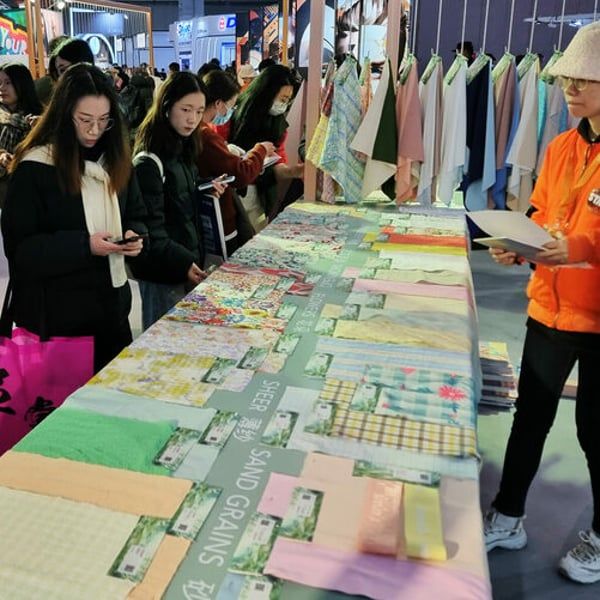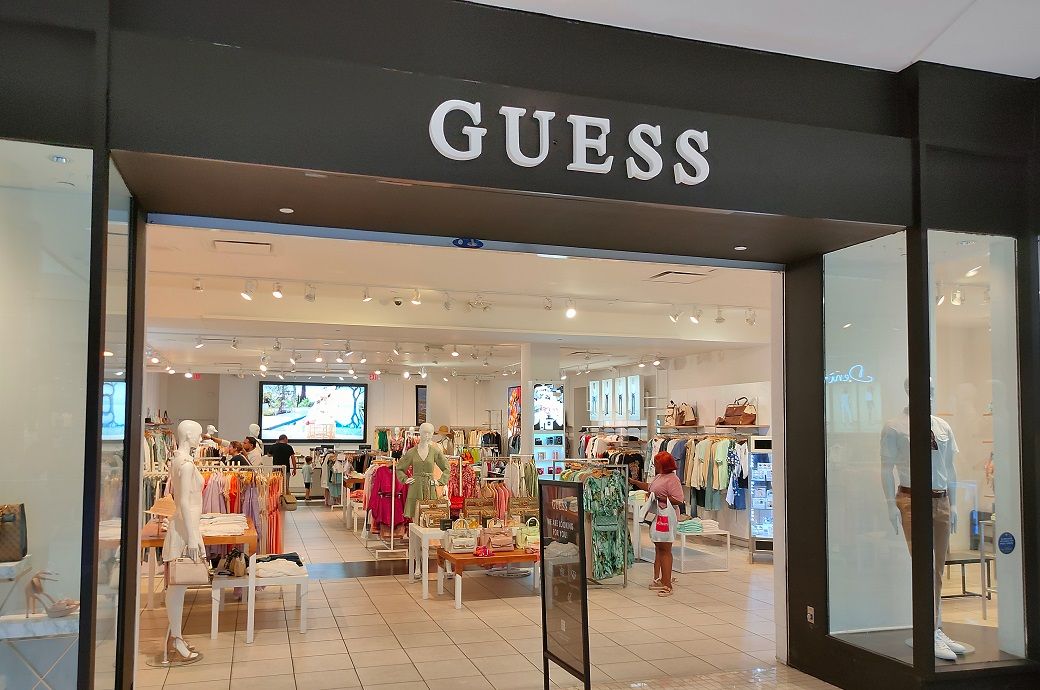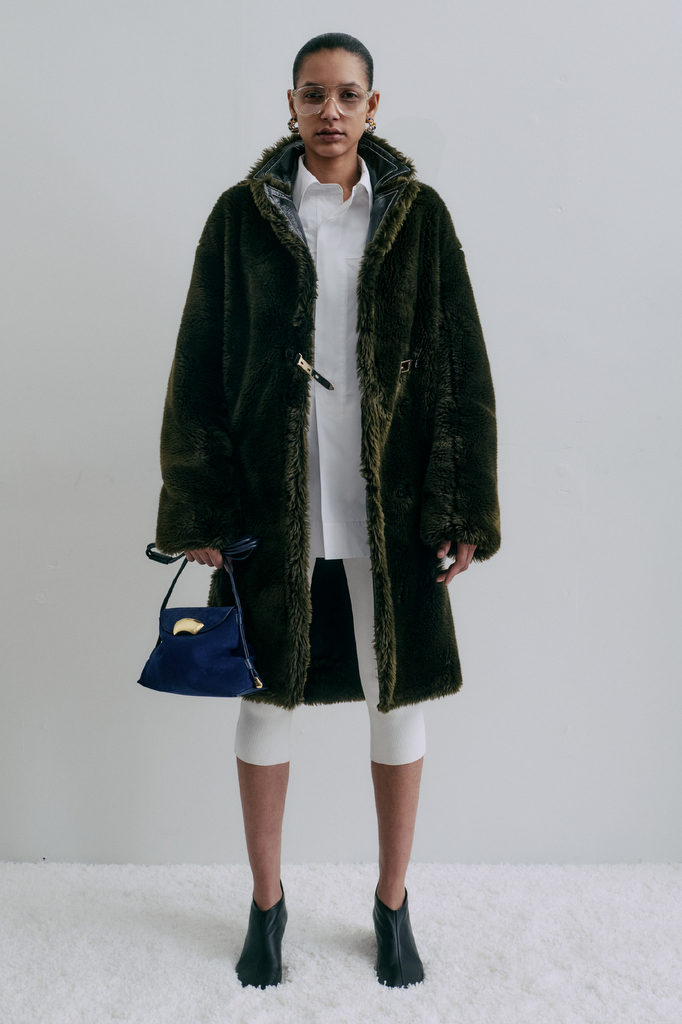Translated by
Cassidy Stephens
Published
March 12, 2024
Along with luxury goods, Chinese sportswear production appears to be the latest sector to escape the slowdown in the textile and clothing sector. But at a time when both exports and domestic consumption are falling, Chinese manufacturers face increased domestic competition, while the rise of Shein and controversies over Xinjiang interfere with the image the industry would like to project. .
The Intertextile materials fair and the Yarn Expo yarn and fiber event were held in Shanghai from March 6 to 8, at the same time as the Chic clothing fair and the PH Value knitwear event. These events were held just over a year after borders reopened and, as FashionNetwork.com previously reported, in a climate of “cautious optimism.”
Last year, China exported textiles and clothing worth €269.4 billion. This represents a drop of 8.1% in the textile sector and 2.9% in the clothing sector, after a year of strong growth in 2022. Domestically, 2023 was no more promising, and fashion continued suffering from the weakness of consumption. Unsurprisingly, this weakness was the focus of the annual meeting of the Chinese Parliament in Beijing on March 6, when the first visitors ventured to Shanghai's trade fairs.
This is a double risk for a “factory of the world” that, since the early 2010s, has been gradually moving its textile industry from export to the domestic market. This strategy was based, in particular, on strong local growth, which prompted several clothing manufacturers to launch their own brands. But “a smart rabbit has several ways out of its hole” (the Chinese version of not putting all your eggs in one basket): at a time when business is slowing down both internationally and domestically, the textile and clothing industry Chinese clothing is looking more than ever for a balance between its two target markets, in the hope that one of them will compensate for the weaknesses of the other in the long term.
Sportswear, a growth paradise
However, two markets appear to have escaped the slowdown. The first is, as expected, luxury goods, where the health crisis has had little effect on growth. The second are the more technical offers. “We are seeing strong growth in the sportswear markets, which is the other sector that is currently doing well, along with luxury and high-end,” says Wendy Wen, CEO of Messe Frankfurt Hong Kong and head of the Intertextile fair. The fair's functional outdoor fabrics and sportswear area has grown in size, with almost 200 manufacturers now exhibiting.
This enthusiasm for sportswear is also evident among clothing manufacturers. “Sportswear is definitely a hot topic right now,” confirms Chen Dapeng, director of the National Garment Industry Association (CNGA) as well as the Chic fair. In Chic, the Outdoor Sports area now equals the surface area of the denim area.

“Our lives have changed, we wear less suits, we dress less formally,” explains the sector representative. It's a new trend, so we need more companies in this field,” he adds. Before adding: “Obviously, we hope to see Adidas or Nike come and exhibit with us one day.
Competition between cities
However, the shortage of both foreign and domestic orders will have had the expected effect of increased competition between manufacturers, both in terms of materials and finished products. “It has always been like this,” confesses a sales representative at knitting specialist Changshu Xinhui, “but we feel that the atmosphere is no longer the same as before Covid.
Now competition is sometimes between provinces and cities, and investment is driven by local political and economic issues. Jiangsu, Changzhou, Anhui, Zhejiang, Ouhai… Some regions are omnipresent on Intertextile's exhibitor list, sometimes in the form of huge pavilions in Chic. Several exhibitors, thousands of kilometers away, affirm that they share the same vision of a race for industrial development between large metropolises.

Chen Dapeng puts this into perspective. “Without a doubt we have many industrial clusters,” says the sector leader. But you have to keep in mind that many of them specialize in certain products. Among buyers, Zheijiang is mainly associated with silk and Jiangsu with technical textiles. Or, among other examples, cotton and wool for Shangdong and sports shoes for Fujian. “So there is competition, but also coordination across our industry.”
Shein, the unexpected ambassador
This year's edition of China's major trade fairs is the first spring session marking the long-awaited return of visitors from the West after four years of closed borders. European and American customers whose markets are concerned about the growing market share captured by Shein's low-cost fashion. This concern did not go unnoticed by Intertextile and Chic exhibitors, neither of whom could confirm working for the brand, which has since become a marketplace.
“They have contacted us, but their way of working with small and medium runs is very different from that of a traditional manufacturer. That is why they initially opt for small units,” says an exhibitor from Guangdong, who does not hide his concern. . “The people who Shein is taking market share from in the West are potentially our customers. So we shouldn't let them crush the market.”
In 2019, CCPIT-tex (China Textile Sub-Council, co-organizer of Intertextile) and CNGMA announced their intention to make “Made in China” a quality label. This raises the question of your perception of the Chinese ambassador, associated in the West with low prices and low quality. “Actually, in terms of improving our image, Shein is a master, because the quality and designs improve a lot over time,” says Chen Dapeng. “But it is still a company and cannot and should not represent China or its industry.”
Xinjiang cotton
Since the beginning of the decade, this industry is experiencing its worst international controversy since that of child labor at Nike suppliers in 1997. What is known as labor integration of the Uighur minority in Xinjiang has been described as forced labor and a possible crime against humanity by the United Nations. Behind the human and image issues, the controversy raises questions about the offer.

“Almost all Chinese cotton comes from Xinjiang (which produces 20% of the world's cotton, including the best seeds, editor's note), and we can no longer export it to the United States. What has happened is that this cotton has been redirected to the domestic market,” says a fabric specialist, noting that China is also the world's largest importer of cotton.
“At the moment, we are attentive to what Europe is going to do about it,” confided a spinner at the Yarn Expo fair, noting that it would be up to the EU to prove that a product was compromised. “If the burden of proof fell on us, the Chinese exporters, we would add an enormous amount of red tape to a market that is already an administrative nightmare.”
The Shanghai shows ended the night of March 8 and will now return in August. Shanghai Fashion Week starts on March 25. Faced with the whims of the market, the Chinese fashion industry does not forget to trust in its creativity.
Copyright © 2024 FashionNetwork.com All rights reserved.












